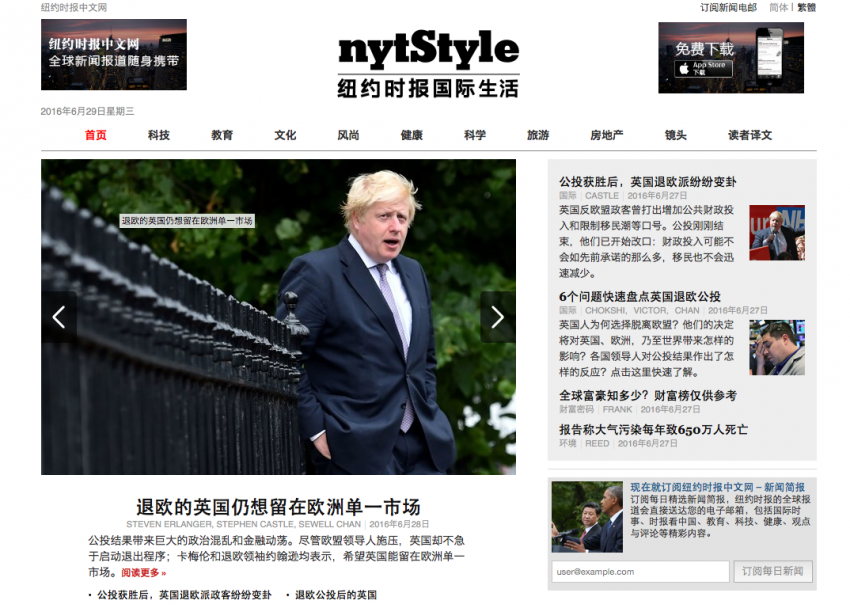This story is part of a series on bringing the journalism we produce to as many people as possible, regardless of language, access to technology, or physical capability. Find the series introduction, as well as a list of published stories here.
I had just moved into my dorm in Beijing. After connecting to Wi-fi, I opened Twitter to check out the news. It wouldn’t load. Then I tried to open my Northwestern email. Same thing.
It wasn’t just email and Twitter, many of the sites I frequent — Facebook, Instagram, even Google — were blocked, as were the sites of The New York Times and Bloomberg.
Of course it was no accident, media in China has long been censored. President Xi Jinping made “cyber sovereignty” one of his priorities as leader of the Chinese Communist Party, and has been cracking down on “rumors,” enforcing rules against anonymity, and disrupting circumvention tools, reports Freedom House.
The tough censorship raises interesting questions for western news organizations that would like to reach readers in China. How exactly does a news organization get around censorship? Is it possible? What are the limitations of a news organization’s efforts?
Cat and mouse
The first step is to recognize that news organizations frequently end up playing a game of cat and mouse with censors. As is the case with distribution, design, and nearly every other facet of media these days, there’s no single solution. Likewise, what works today may not work tomorrow, so you’ll have to continually test new ideas to stay ahead of the game insofar as that’s possible.
Unofficial accounts and planning for the future
With more than 650 million users in China, WeChat is one of the most widely used social media platforms in the country. Chinese and foreign news outlets alike use WeChat to reach readers inside and outside of China, where 100 million more users in 200 countries use the site each month.
Unfortunately, WeChat is also heavily censored and a number of new organization’s official accounts have been shut down. “We have struggled to maintain social media accounts in China because of the government’s unfavorable attitude toward foreign media,” said Craig Smith, The New York Times’ managing director for China. “All of our official or 'verified' social media accounts inside China have been shut down.”
The Times is left to maintain unofficial accounts, Smith said, but hasn’t made a push to market them due to censorship fears, which means they’ve remained relatively small.
The best option at the moment seems to be to build audiences where possible to be ready when and if change comes.
“We opened an official account on the international (WeChat) platform in hopes of reaching Chinese-language speakers outside of China and in anticipation of the day that the wall between the two (international and domestic platform) eventually comes down,” Smith said.
Publish despite inevitable censorship
Publishers and activists in China frequently publish with the knowledge that links will die or pages will become inaccessible soon after being published. Though relatively short lived, the journalism on those pages may still find a wide audience, said Rick Dunham, co-director of Tsinghua University’s Global Business Journalism program.
Part of the reach has to do with the rate at which stories can spread. But it also has to do with some quirks in the censorship system. “Sometimes, stories that are censored on laptops remain alive on some mobile devices,” Dunham said.
Of course the risk is that not only will links posted on social media die, but that accounts will be disabled. “On the domestic unofficial or unverified accounts, we do not post sensitive material because it will be deleted and eventually the accounts will be shut down,” Smith said.
Niche sites
While much of The New York Times’ content is blocked in China, the company has seen some success in publishing sites dedicated to topics that aren’t censored, Smith said. It currently publishes cn.nytStyle.com, which carries content that is not censored.

Though the site is called nytStyle, in late June 2016, it was running stories on the Brexit vote, Ikea dresser recall, and, ironically, Edward Snowden criticism of a big brother measure in Russia.
Relying on your audience
Ultimately the most reliable way to get unfiltered news to consumers in China doesn’t start with publishers. Instead, it requires readers to seek out foreign news and use a VPN to get it.
“International news outlets ... assume that Chinese news consumers who want to read their content will find it through alternative means such as VPNs or mirror web sites,” Dunham said. Smith echoed the sentiment. “Our audience reaches us primarily through VPN.”
Ultimately, the best news organizations can do is keep experimenting and working to change the system. It may seem hopeless, but Smith ensured me it’s not.
“Operating a foreign news site targeting China is challenging but not impossible,” Smith said. “Our audience is, in fact, growing steadily.”
About the author





